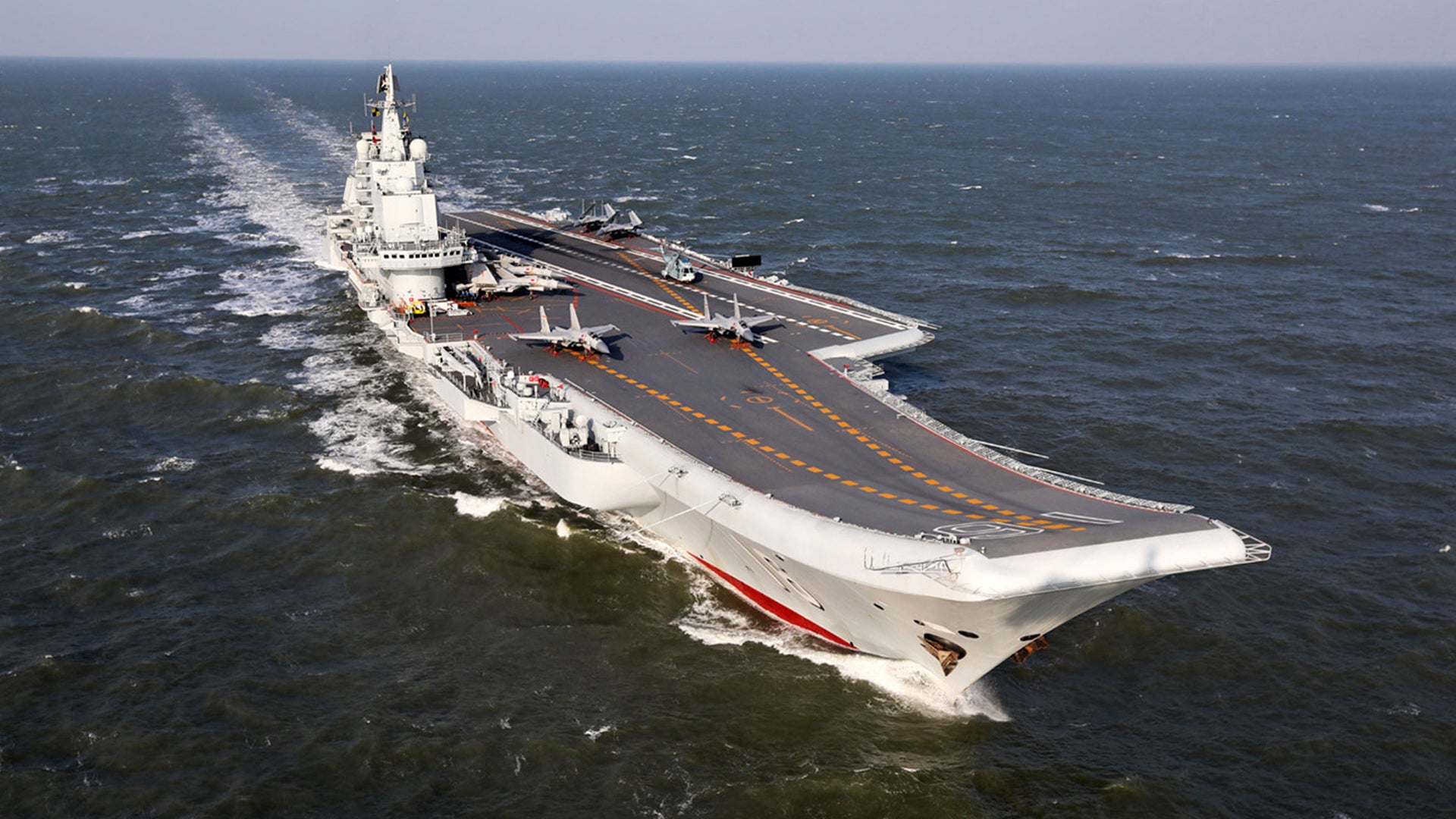China’s lone carrier, the totally refurbished Kuznetsov class Liaoning, and its battle group has been on a highly-publicized cruise that began at its homeport of Qingdao on the Yellow Sea and continued up into the Bohai Sea for drills, and down through the East China Sea, past Okinawa and the First Island Chain and into the Pacific (a first). It then traveled south before passing Taiwan’s southern tip and into the highly disputed South China Sea. There the carrier put into port in China’s sprawling Hainan Island naval facility, where a massive dock—the largest of its kind in the world—was built recently to accept her and her escorts.
While the ships were far north, in the Bohai Sea, complex exercises were executed—the first of their kind for the carrier—including live fire drills against airborne and surface targets. The ship’s J-15 fighters and helicopters were very active during this training evolution and have remained embarked on the carrier and flying missions ever since.

During the carrier’s southerly trip it skirted Japanese and Taiwanese territory, both countries that have long-standing territorial disputes with Beijing and are experiencing especially heightened tensions with China at the moment. The route was clearly planned as much as a highly-visible exercise of China’s new power projection capabilities as it was for training purposes.
Her flotilla includes multiple ships drawn from disparate PLAN fleets, including two Type 052C and one Type 052D destroyers, two Type 054C frigates, one Type 056A corvette and a Type 903A support ship. These were the ships the Japanese Ministry of Defense identified as part of the armada that sailed past Japanese territory. More ships could join the battle group if it pushes south, deep into the troubled waters of the South China Sea. Also it is worth mentioning that at least one submarine is also likely part of the battle group, and more would likely join once the armada leaves Hainan Island which is one of China’s master submarine bases and includes a submarine facility carved inside a mountain.

It is likely that the Liaoning and her escorts will venture next into the southern portion of the South China Sea, a place where US carrier groups often prowl as a counterweight to China’s island-building campaign and claims on nearly the entirety of the body of water. By sailing its own carrier group around its manmade island outposts (that are now armed) in the South China Sea it sends a strong message to other countries in the region, many of which also claim large areas of the waterway as their own. That message being the US is not the only one with overwhelming naval power projection capabilities that can cruise the area at will.
Even if the Liaoning does not sail south from her present location, it seems quite clear that this cruise, one that expanded the ship’s tactical capabilities and its physical reach, will serve as a final test before declaring the ship and its air wing operational even if in a limited capacity. The Liaoning may be no match for her nuclear powered US counterparts, but going from no carrier operations experience to even a limited operational state in just four years is one amazing accomplishment. With Liaoning’s all indigenously built sister-ship now far along in her construction, it is one that will pay off strategically in a much larger way in the not so distant future.

Looking farther ahead, China will move away from a ski-jump carrier design and to a catapult and barrier arrestment (CATOBAR) configuration with future carriers. Such a move will drastically increase the combat punch Chinese carriers to come and will be a major step forward in terms of approaching parity with the US or even with India for that matter which also has CATOBAR carriers in its near future. Still, a lot of learning has to happen between now and then, but as we have seen over the last half decade of Chinese carrier operations, learning fast seems to be one of the People’s Liberation Army Navy’s strong suits.









Contact the author Tyler@thedrive.com
